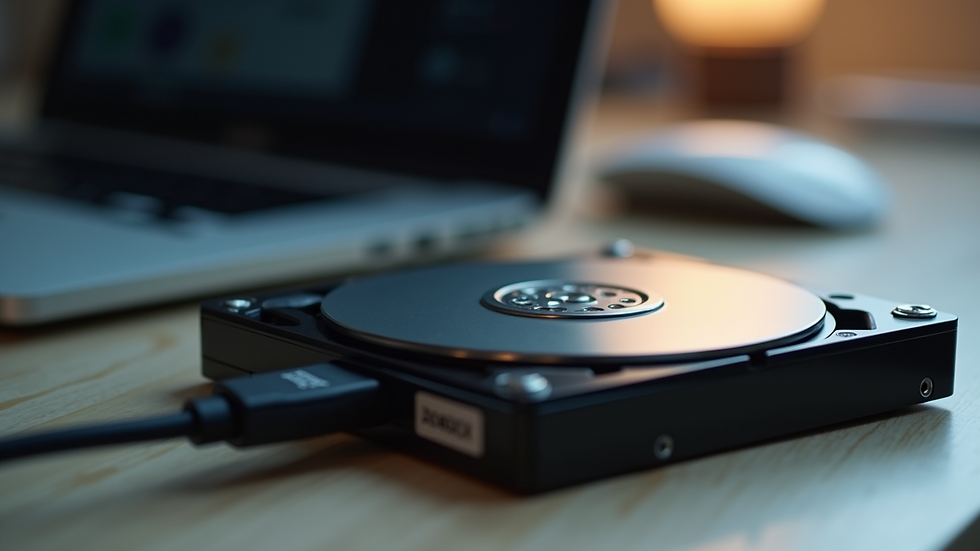The Importance of Regular Data Backups
- Rick Patin
- Aug 8, 2025
- 4 min read
In today’s digital world, data is one of the most valuable assets for individuals and businesses alike. Losing important files, documents, photos, or business records can cause significant disruption and stress. Regular data backup is essential to protect against data loss caused by hardware failure, accidental deletion, cyberattacks, or natural disasters. This article explores why backing up your data regularly is crucial, how to do it effectively, and practical tips to keep your information safe.
Why Regular Data Backup Matters
Data loss can happen unexpectedly. A computer crash, virus infection, or even a spilled cup of coffee can wipe out important files in seconds. Without a backup, recovering lost data can be difficult, expensive, or impossible. Regular data backup ensures that you have a copy of your important information stored safely elsewhere.
Backing up data regularly helps you:
Prevent permanent loss: If your original files are corrupted or deleted, backups allow you to restore them quickly.
Save time and money: Recovering lost data through professional services can be costly and time-consuming.
Maintain business continuity: For businesses, data loss can halt operations, damage reputation, and lead to financial losses.
Protect against ransomware: Backups provide a way to recover files without paying ransom to cybercriminals.
For example, a small business that loses customer records due to a hard drive failure can restore those records from a recent backup and continue operations without major disruption. Similarly, a photographer who accidentally deletes photos can retrieve them from a backup and avoid losing precious memories.

Best Practices for Data Backup
To maximize the benefits of data backup, it’s important to follow best practices that ensure your backups are reliable and accessible when needed.
Backup frequently: The more often you back up, the less data you risk losing. Daily or weekly backups are common depending on how often your data changes.
Use multiple backup locations: Store backups in different physical or cloud locations to protect against theft, fire, or natural disasters.
Verify backups regularly: Test your backups to make sure files can be restored without errors.
Automate the process: Manual backups can be forgotten or done incorrectly. Automating backups reduces human error and ensures consistency.
Encrypt sensitive data: Protect your backups with encryption to prevent unauthorized access.
For instance, a user might keep one backup on an external hard drive at home and another in a secure cloud service. This way, if one backup is compromised, the other remains safe.

How to backup data automatically?
Automating your data backup process is one of the smartest ways to protect your information without extra effort. Many software solutions and cloud services offer scheduled backups that run in the background, ensuring your data is always up to date.
Here are steps to set up automatic backups:
Choose a backup solution: Select software or a cloud service that fits your needs and budget.
Select files and folders to backup: Decide which data is critical and should be included.
Set backup frequency: Configure how often backups occur - daily, weekly, or in real-time.
Choose backup destination: Pick local drives, network storage, or cloud platforms.
Enable notifications: Get alerts if backups fail or encounter issues.
For example, many users rely on cloud backup services that automatically sync files from their computers to secure servers. This ensures that even if the device is lost or damaged, the data remains safe online.
One recommended option for automatic data backup provides easy setup, strong encryption, and reliable cloud storage to keep your data protected without manual intervention.

Common Backup Methods and Their Advantages
There are several ways to back up data, each with its own pros and cons. Understanding these methods helps you choose the best approach for your situation.
External Hard Drives: Portable and relatively inexpensive, external drives allow quick backups and restores. However, they can be lost, stolen, or damaged.
Network Attached Storage (NAS): A dedicated device connected to your home or office network that stores backups accessible by multiple users. It offers convenience but requires setup and maintenance.
Cloud Backup Services: Data is stored on remote servers managed by providers. Cloud backups offer offsite protection, scalability, and accessibility from anywhere with internet. They usually include encryption and versioning.
USB Flash Drives: Useful for small amounts of data and quick transfers but not ideal for large or frequent backups due to limited capacity and durability.
For example, a freelancer might use an external hard drive for local backups and a cloud service for offsite protection, combining speed and security.
Tips to Maintain a Reliable Backup System
Creating backups is only the first step. Maintaining a reliable backup system requires ongoing attention and good habits.
Keep backup software updated: Updates often include security patches and new features.
Rotate backup media: Use multiple drives or services and rotate them regularly to avoid wear and tear.
Label and organize backups: Clear labeling helps identify backup dates and contents quickly.
Secure backup locations: Store physical backups in safe, dry places and use strong passwords for cloud accounts.
Document your backup plan: Write down your backup schedule, methods, and recovery steps for easy reference.
By following these tips, you ensure that your backups remain effective and ready when you need them most.
Regular data backup is a critical practice that safeguards your digital life. Whether for personal memories or business data, having a reliable backup strategy minimizes risks and provides peace of mind. Embracing tools like automatic data backup can simplify the process and keep your information secure without constant effort. Start backing up today to protect your valuable data for tomorrow.




Comments